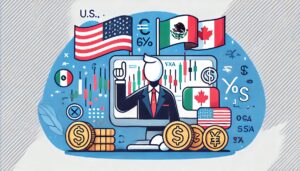If you’re new to investing, you’ll find several different types of investments to choose from when you start building your investment plan. Each type of investment, or asset class, has its special features, so it’s important for you as an investor to understand the pros and cons of each one. Here’s a quick overview of the main investments and what you need to know about them to help you make smart investment choices.
Asset classes are groups of investments that behave similarly in the market. They play a key role in creating a well-rounded investment portfolio because different asset classes can offer different returns and have different levels of risk. This article gives a brief overview of the main asset classes, talking about their features, benefits, and possible risks.
What are Asset Classes?
Asset classes are groups of investments that have similar features and follow similar rules and market trends. They usually have different levels of risk and chances for making money, which makes them good for different investing plans and goals. The idea of asset classes is really important in managing investments and building a portfolio because it helps investors spread out their investments to control risks and make the most of their returns.
What Is Asset Allocation?
Asset allocation is when you divide your money between different types of investments, like stocks, bonds, real estate, commodities, and cash. You do this in a way that matches your financial goals, how much risk you’re willing to take, and how long you plan to invest. The goal is to make a mix of investments that can give you the highest return for the amount of risk you’re taking. By putting your money in different types of investments, you can lessen the effect of one investment not doing well on your whole portfolio. This helps you manage risk. Asset allocation is a very important part of investing, and it plays a big role in how well your investments do over time. The best way to divide your money between investments depends on things like your age, how much risk you’re willing to take, and your financial goals.
Timeframe
Timeframe, when it comes to investing, means how long you plan to keep an investment before you sell it or use it. It’s a very important part of how you invest because it affects how much risk you’re willing to take, what your investment goals are, and how you spread out your money between different types of investments. If your timeframe is short, like a few years, you might want to be more careful and put your money in less risky things, like bonds or things that are like cash. This is because there’s not much time to make up for losses from investments that can change a lot in value. On the other hand, if your timeframe is long, like many years, you can take more risks and put your money in things that can change a lot, like stocks.
Risk Appetite
Risk appetite is how much risk someone is willing to take to reach their investment goals. It’s a very important idea in investing and finance because it helps figure out what kind and how much risk someone is okay with. People who are okay with taking more risks are usually willing to deal with more ups and downs and the chance of losing money if it means they might make more money. These people might put more of their money into riskier things like stocks, real estate, or different types of investments. On the other hand, people who don’t want to take many risks like things to stay stable, and want to keep their money safe more than they want to make a lot of money. They might like to invest in safer things like bonds or keep their money in cash or things like cash.
Understanding Different Asset Classes
There’s been a lot of discussion about how many different types of assets there are. Many experts in the market and financial advisors break these assets down into five main categories. Here’s a closer look at the different asset classes and what makes them unique:
asset classes: Equities (Stocks)
Equities give you ownership in a company and can be bought and sold on stock exchanges. They are seen as a high-risk, high-reward type of asset because their prices can change a lot. Investing in equities can make your money grow over time, but it requires patience and the ability to handle ups and downs.
Key Features:
- You own a part of the companies
- Chance for high returns
- Income from dividends
- High ups and downs
Fixed Income (Bonds)
Bonds are a type of loan where the issuer borrows money from investors and promises to pay back the original amount plus interest on a set date. They are usually seen as safer than equities, but they offer lower possible returns.
Key Features:
- Regular interest payments (coupons)
- Get your money back when the bond matures
- Less risky than equities
- Can be affected by changes in interest rates
Cash and Cash Equivalents
This type of asset includes cash on hand, money in the bank, and short-term government bonds. It’s seen as the safest type of asset, but it also has the lowest return. It gives you easy access to your money and helps keep it safe.
Key Features:
- Safe and low-risk
- Easy to get to your money
- Low returns
- Keeps your money safe
asset classes: Real Estate
Investments in real estate include physical properties like homes and commercial buildings, as well as indirect investments through Real Estate Investment Trusts (REITs). It can give you income (through rent) and a chance for your money to grow.
Key Features:
- Income from rent
- Chance for your money to grow
- Helps spread out investments
- Hard to sell quickly and high costs to buy and sell
Alternative Investments
Alternative investments include a wide range of assets like private equity, hedge funds, derivatives, venture capital, and more. They are often used by experienced investors to spread out their investments and protect against typical market risks.
Key Features:
- High-risk, high-reward chance
- Helps spread out investments
- Complex strategies
- Hard to sell quickly
asset classes: Commodities
Commodities are physical goods like oil, gold, farm products, and metals. They can be traded on exchanges, and their prices are often affected by global economic trends, supply and demand, and world events.
Key Features:
- Protects against inflation
- Helps spread out investments
- Prices can change a lot
- Affected by global events
Stocks or Equities

Historically, trading stocks has been the riskiest and most profitable of the three main types of investments. For example, many big companies have lost money about once every three years in stocks (on average). It’s also worth noting that the losses have been pretty large at times. On the other hand, investors who are willing to put up with ups and downs in the stock market for a long time have usually made a lot of money. Stocks are the “heavy hitters” in a company’s investment mix, with the most growth potential. Equities, also known as stocks or shares, show that you own part of a company. They are bought and sold on stock exchanges, and their value can change a lot based on how the company is doing, what’s happening in the market, and other things.
Benefits:
- Chance for high returns: Over time, equities have made more money than other types of investments.
- Liquidity: Stocks are easy to buy and sell on stock exchanges, which makes it easy for investors to get their money.
- Dividend income: Some companies pay dividends, which can give investors a steady stream of income.
Risks:
- Market ups and downs: Stock prices can change a lot, which can lead to losses for investors.
- Company risk: How well a company does can affect the value of its stocks.
Bonds or Other Fixed-Income Investments

Bonds are usually less up and down than stocks, but they also usually make less money. So, investors who are getting close to their financial goals might want to put more of their money into bonds and less into stocks. Even though bonds usually don’t grow as much as stocks, many investors like that they are less risky. But you should know that some bonds are like stocks in that they can make a lot of money. Bonds, also known as fixed-income investments, are ways for governments, cities, or companies to get money. They usually pay a set interest rate (coupon) to the people who own the bonds at regular times until the bond is paid off. At that time, the person who owns the bond gets their original investment back.
Benefits:
- Making money: Bonds give you a regular income through interest payments.
- Lower risk: Bonds are usually seen as less risky than stocks, which makes them a good choice for people who don’t like to take risks.
Risks:
- Risk of interest rates: When interest rates go up, the value of bonds that are already out there usually goes down.
- Credit risk: The chance that the person or group that issued the bond might not be able to pay back the interest or the original investment when the bond is due.
Currency or Cash Equivalents as an asset classes

Having cash or cash-like assets is good because they’re easy to access. You can get your money from your bank, your safe, or in foreign currency. These assets include money you have, money in the bank, and short-term investments. They’re low-risk because their value doesn’t change much. You can also get your money when you need it. They may not make as much money as other investments, but they’re important. They help keep your investments stable and accessible. This can be very helpful when the market is uncertain. It can protect your money from big losses.
Benefits:
- Spread out risks: Investing in different things can help lower the chance of losing money.
- Tax perks: Some investments, like retirement accounts, can help you save on taxes.
- Long-term growth: Investing for a long time can help you build wealth and reach financial goals, like buying a home or retiring.
Risks:
- Ups and downs: Investments can change in value, and you might lose money if the market goes down.
- Hard to sell: Some investments might be hard to sell quickly without changing their price.
- Interest rate changes: The value of some investments, like bonds, can go down if interest rates go up.
- Not getting paid back: There’s a risk that the company or government that borrowed money might not pay it back.
- Inflation: The value of your money might go down over time if prices go up faster than your investments.
- Putting all your eggs in one basket: If you only invest in one thing, you might lose a lot if that one thing doesn’t do well.
Real Estate or Other Tangible asset classes

Real estate and things you can touch, like machines and gold, are often used to protect against inflation. These types of investments are seen as more “real” because you can actually see and touch them. This is different from investments that are just numbers on paper, like some complicated financial products, which don’t have a physical form. Real estate investments can be buildings people live in, work in, or use for other things, as well as special kinds of funds that invest in real estate. Real estate can give you money through rent and also has the chance to increase in value over time.
Benefits:
- Spreading out investments: Real estate can help balance a portfolio because it usually doesn’t move in the same direction as other types of investments.
- Making money: Renting out property can give you a regular income.
Risks:
- Hard to sell: It can take time to buy or sell physical properties.
- Market ups and downs: The value of real estate can change based on the economy, interest rates, and other things.
Forex, Futures, and Other Derivatives

Forex, futures, and other more complex types of investments like derivatives have a higher level of risk. They are usually used for more advanced investing strategies. Forex, or foreign exchange, is about trading different currencies and making money from changes in their values. Futures are agreements to buy or sell something at a set price on a specific date. Other derivatives, like options and swaps, are financial contracts based on the value of another asset. These types of investments are usually used by people who know more about investing and trading because they can be complicated. You need to understand financial markets and trading strategies well to use them. While they can make more money, they also have higher risks and can be less stable than other types of investments.
Benefits:
- Leverage: You can control a big investment with less money. This can make your profits bigger.
- Spreading out investments: Adding forex, futures, and derivatives to your investments can help you spread out your risks.
- Making money in different markets: You can trade these assets in markets that are going up or down, which gives you more chances to make money.
Risks:
- Hard to understand: These investments can be tricky and you need to know a lot about financial markets to understand the risks.
- Big ups and downs: The markets for forex and derivatives can change a lot, which can lead to big losses.
- Risks of leverage: While leverage can make profits bigger, it can also make losses bigger. If the market goes against you, you could lose more than you put in.
- Risk of the other party not doing what they said: In derivatives trading, there’s a chance that the other person in the trade won’t do what they promised, which could make you lose money.

get the access pass
Increase profits using a mix of expert advisors, indicators, and live trading room tools with the Auvoria Prime Access Pass.
* Includes Social Trading monthly fee
asset classes: Commodities
Commodities are basic raw materials or agricultural products that you can buy and sell. This group includes things like oil, gold, silver, wheat, and coffee. Commodities can be a good addition to an investment portfolio because they often don’t move in the same direction as stocks and bonds. They can also help protect against inflation since the prices of commodities often go up when the cost of other things goes up. However, investing in commodities can be risky. Their prices can change a lot because of things like the weather, world events, and economic data. This can make prices go up and down a lot, so if you invest in commodities, you need to be careful and manage your risks.
Benefits:
- Spreading out investments: Commodities can help balance a portfolio because they often don’t move in the same direction as stocks and bonds.
- Protection against inflation: Commodities, especially precious metals like gold, can help protect against inflation since their prices often go up when other costs go up.
- Making money from price changes: You can make money from changes in the prices of commodities because of things like the weather, world events, and changes in supply and demand.
Risks:
- Prices can change a lot: Commodities can be very volatile, with prices going up and down a lot because of things like the weather, world events, and economic data.
- Market risks: The performance of the commodities market can be affected by global economic conditions, which can be hard to predict.
- High risk: The nature of trading commodities can lead to big losses, and it might not be right for all investors.
- Hard to understand: Trading commodities can be complex and requires a good understanding of the market and what affects prices.
asset classes: Conclusion
To sum up, knowing about different types of investments, their good and bad points, and how they fit into your investment plan is very important. This is true whether you’re just starting to invest or have been doing it for a while. Investments like stocks, bonds, real estate, commodities, and derivatives all have their chances and problems. Also, the ideas of how to spread out your investments, how long you plan to invest, and how much risk you’re willing to take are all key parts of a good investment plan. By thinking carefully about these things and matching them with your financial goals, how much risk you’re willing to take, and how long you plan to invest. Remember, investing always comes with risks, so it’s important to get advice from financial experts and keep learning to make smart choices.





